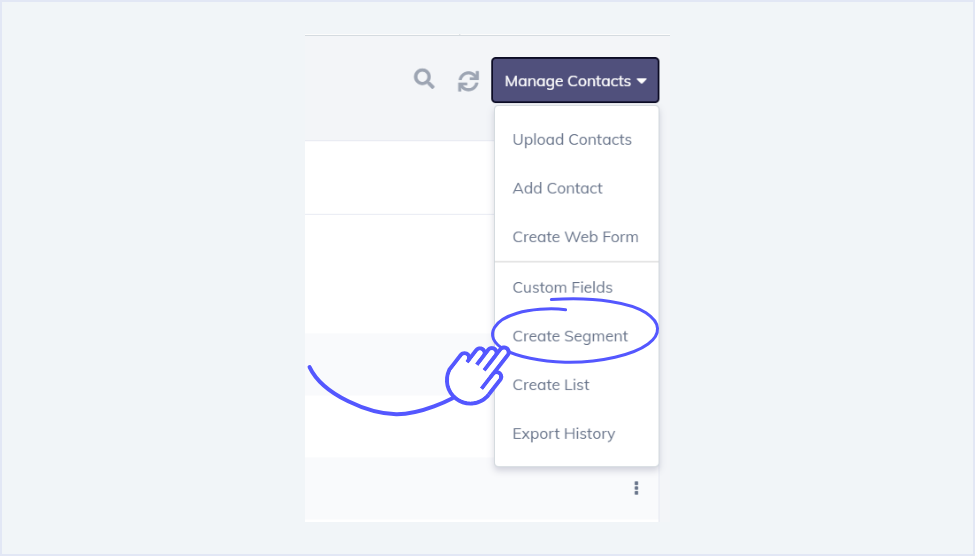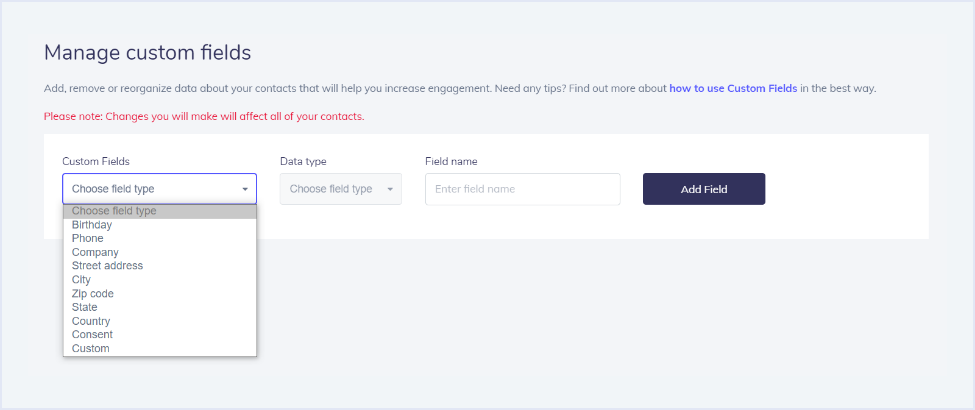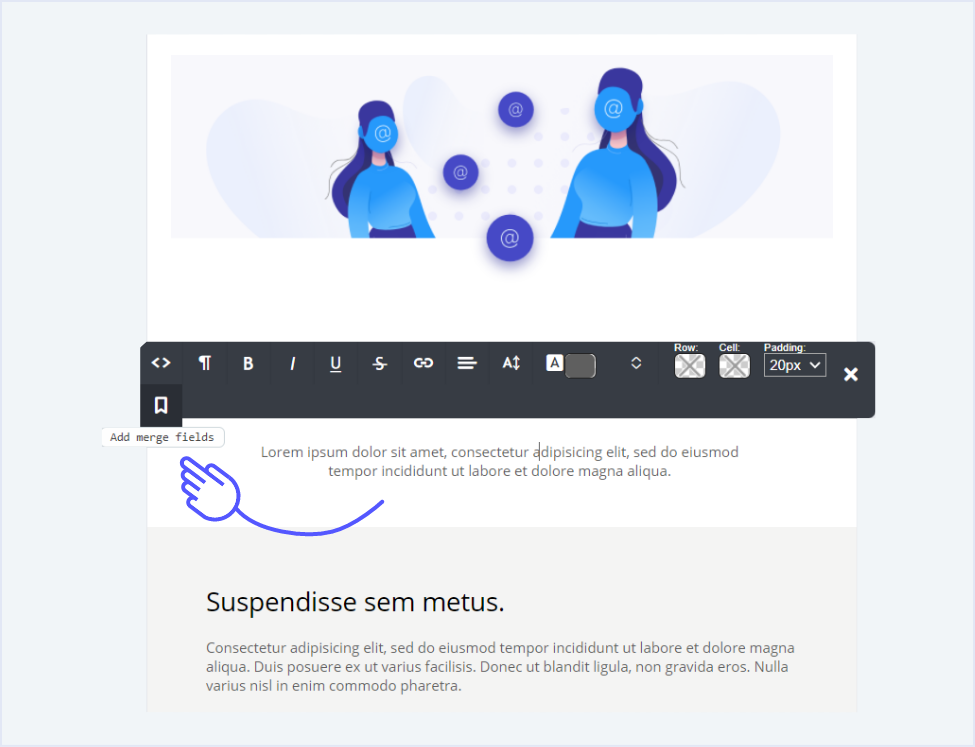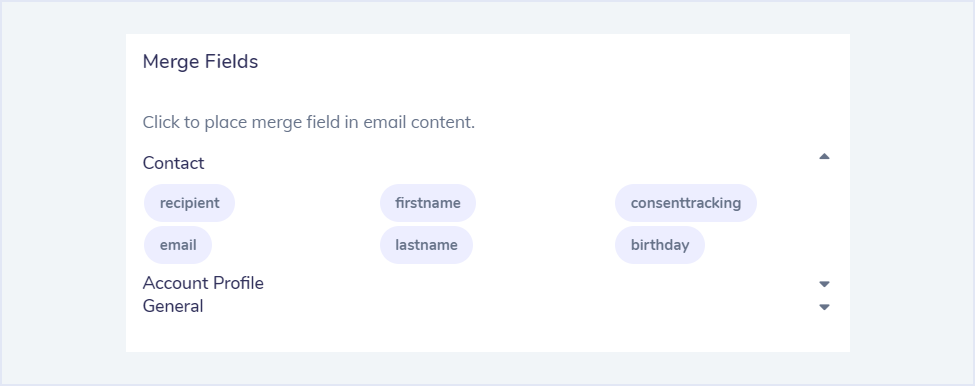We all know that personalization is the key to successful email marketing.
There are various studies, papers, and sources that back it up. From confirming that personalized email increases open and click-through rates to stating that 91% of customers are more inclined to shop if the brand offers them relevant content. And that is just the tip of the iceberg. With all this data, email marketers are confidently applying various email personalization techniques, hoping that they will generate more interaction and sales.
However, they don’t realize that too much personalization can actually freak people out. You see, people are willing to give some information about themselves as long as they are aware of it. But most of them don’t realize just how much information they unknowingly share. From the moment they sign up, through filling out a seemingly innocent questionnaire, they save all of the data they give for later use. They monitor their purchase behavior, clicks, and routine to deliver better, more relevant content that, if not carefully dosed, can create a disconnect between a brand and a consumer.
So, in order to make the most of your email personalization strategy, you need to find that sweet spot. A balance between the content you want to use and the content you should withhold. All of this to make your customer be happy to get a message from you, instead of being creeped out and moving on.
Table of Contents
Why should you personalize emails?
Here’s the case. If you have any experience with email marketing, then you know you need to personalize your emails. Beautiful, but vague messages will be most probably skipped by the recipient because they don’t bring any value.
Think of it this way - content is not generic. It doesn’t relate to everybody because people are raised differently. They have different political or religious views and aren’t all the same age and gender. If you decide not to use any personalization, your content may appeal to a fraction of your recipients instead of the majority. And if you continue that generic aesthetic, more and more people will unsubscribe, because it simply doesn’t appeal to them. People will welcome personalized emails in their inbox because they find them relatable. And you get more attached to things that you can relate to, instead of something ambiguous.
There are two reasons why people are so keen on personalized content and why you should be too. Both of them are actually deeply related to our psyche. They are information overload and the need to be in control.
With personalized content, people actually think that they have control over the information they consume, which is not entirely true. It's not really them who manage the content. But because people shared their preferences with an app or a brand, and in return, they get more relevant content, they feel like it's entirely their choice. They feel like they have power. Because of that personalization is a desirable element in email and social media communication. It makes people feel like they chose this and makes them keep coming back for that feeling of control.
The second reason is due to the amount of and varied information all over the Internet. By getting curated content they avoid so-called information overload. They only get the data they can consume that is in line with their interests. This is also something related to the current world we live in. There is so much information online, that is easily accessible with a click of a button. But people are not able to consume so much information, and due to this, they search for alternatives. For example, curated news apps, where they can choose their preferences. It shuts them out of the content they don't care about and delivers only the things they want.
See, people want personalized content. They actively look for it. This means that not only statistics but also the human brain confirms that you should personalize your content. However, you still need to navigate the tricky territory of the amount of personalization in order for them to actually enjoy your emails.
How to find balance?
The simplest way to do so is to put yourself in the customer’s shoes. We all can get a bit caught up in trying to get the most out of the information the recipients have shared with us. Even though many of us have pure intentions of delivering the most relevant content possible to generate engagement and customer satisfaction, it doesn’t mean it will be perceived that way. You simply might go a bit overboard and don't even notice it.
So when you’re done writing an email, try to imagine your reaction if you had been the one to receive it. Would you be happy with the amount of dedicated content, or would you find it a bit overwhelming? If you’re still not sure, take inspiration from the content you consume. Check your subscriptions to see just how much personalization goes into an email you really enjoy. Then, make a note of it and apply it to your campaigns.
So, what can be personalized? In short - pretty much everything. Email personalization has come a long way. With advanced integrations, you can find out about customer behavior, their preferences, the best times to send them an email. Even (if you’re dedicated enough) their relatives’ birthdays or special occasions. Depending on how advanced you are and how much you want to know, you can monitor their social media activity, track their mouse on your page, and much more.
However, you need to think just how much information you’re gonna let them know you have. We mentioned this before. All of this information can be used by you to segment your contacts into relevant groups, though, not everything should be used in your email communication. Your safest bet is to use the information the consumers gave you in an email. Keep the rest for your own contact management and eventually sprinkle it here and there as you feel it’s right.
Personalize with Elastic Email
Now, there are many ways that you can personalize your emails. But let’s talk about the ones that are the absolute baseline for any successful personalized email campaign. The ones you absolutely can't go on without. Keep in mind that having a strong base can really make it easier for you when start working on something more complicated.
Segmentation
If you want to deliver a more personalized experience, you should start with segmenting your contacts based on their regions, when they open their emails, their gender, their age, or pretty much anything that can be relevant to your content. The key is to make enough of a segmented list that will allow you to deliver good content, in line with people’s interest, but at the same time broad enough so you don’t end up writing 15 different emails for one campaign.
If you want to create a segment, there is really nothing simpler. You can do so on your Contacts screen, by clicking on “manage Contacts” and choosing the “Create Segment” option

Then the real fun begins! You can name your segment and choose rules that will automatically sort the contacts into their correct lists. There are various options including a custom one when you truly want to narrow down this one specific group. For more precision, add a sub-rule to control segment members.

Overall, segmenting your list is very useful for creating a strong foundation for your upcoming personalization techniques. It allows you to sort your contacts based on their preferences or activity, which makes it easier if you want to send multiple different campaigns to promote different products. You could even sort them based on their previous purchases to send super-curated content with offers. Just make sure that you're doing your segmentation right the first time and you’ll be good to go.
Merge fields
Another way to instantly improve your personalization strategy is by using merge fields in your emails. This is a handy tool that allows you to add a little “flair” to your messages, a personal touch if you will.
So how does it work? Merge fields switch a specific tag for an appropriate word in an email. If you know people's names, use {firstname} to replace and display their name in messages.
Hi {firstname}!
Hi Erica!
See? You can add a bunch of merge fields or even create your own like phone number or birthday to get more email campaigns opportunities!
There are two ways you can go about creating custom fields. One is via Manage Contacts in the Contacts screen where you get a pop-up window and you can select the field, the data type and the name:


Or you can do it through specific email addresses where you need to click on the eye button.

Either way, the same pop-up window will appear. Once confirmed, the field will be visible immediately on the designated email address.

After preparing merge fields, include them in your email. Check and insert any unknown field names in the message.
When composing an email, click "add merge fields" for all options, including custom fields.


Keep an eye out for more articles related to personalization and learn more about merge fields with our help articles. You can always contact our Customer Success Team if you have any questions!







